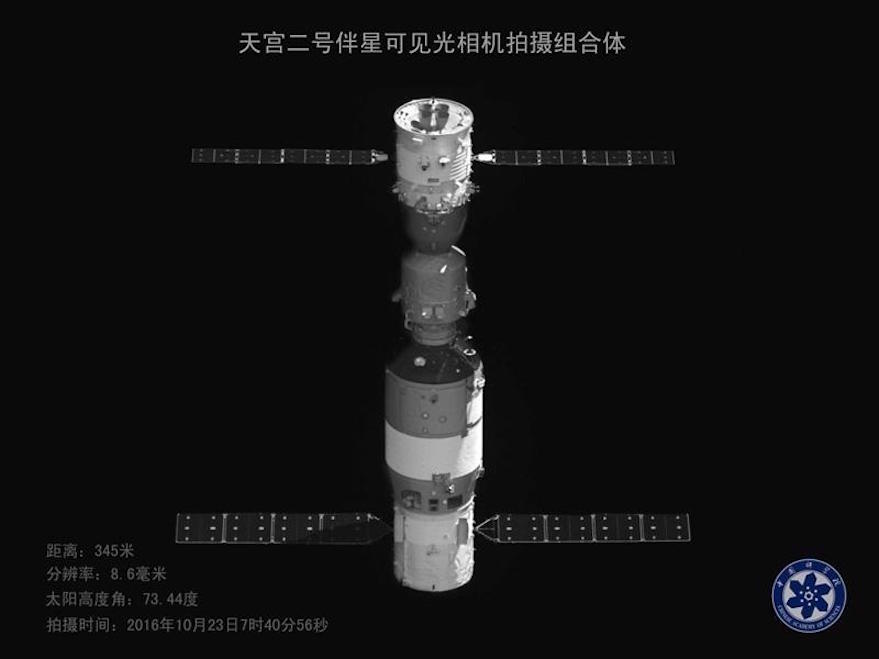HELSINKI — China is developing a dependence on space-based space situational awareness as its space activities expand, according to a new report.
China’s on-orbit presence has grown dramatically in recent years, with a boom in numbers of satellites launched, and the construction of the Tiangong space station. However, its space situational awareness (SSA) architecture heavily relies on space-based systems due to its limited global ground sensor network, according to a report from the China Aerospace Studies Institute (CASI).
The report provides new insights into China’s SSA infrastructure and outlines its unique constraints and priorities.
China has sent at least 10 spacecraft to low Earth orbit (LEO) for space-based SSA, according to analysis of open-source Chinese reports and literature. Further unspecified satellites in general orbits have been referred to texts as carrying out SSA tasks.
Noted satellites include Shiyan and Shijian technology demonstration spacecraft, as well as satellites from commercial actors Changguang Satellite Technology, operator of the Jilin remote sensing constellation, and Origin Space, a space resources firm.
The satellites use mostly optical (including infrared for detecting heat sources, especially useful when spacecraft are in Earth’s shadow, and LiDAR) and radio frequency sensors, with a variety of detection ranges.
Chinese satellites employ onboard processing for tasks like collision avoidance, aiming to reduce reliance on limited and overburdened ground stations. This autonomy enables faster response times, crucial for a nation with limited access to global relay networks. The general U.S. approach is described as relying on data analysis on the ground with human oversight.
LEO is currently the main focus of its SSA efforts due to the dense satellite population and collision risks. Less attention is set on geostationary orbit, on which the U.S. has a stronger focus.
The development of China’s space-based SSA is seen not only as having military uses and applications, but also for collision avoidance and other strategic and economic reasons. The efforts also assist China’s aim of building its own space object catalog, rather than relying on U.S. or Russian data.
China’s approach is found to contrast with that of the U.S., which integrates space-based SSA with extensive ground sensors. China’s ability to establish ground sensors is limited by political factors. These divergent approaches bring potential challenges and opportunities, the report states.
China’s reliance on space-based SSA assets could heighten threat perceptions if these systems are disrupted, potentially leading to misinterpretation of incidents. Conversely, the report suggests, this dependence may also drive China’s commitment to space stability, given its growing reliance on space for economic and military operations.
The report also recommends that the U.S. regulators expedite the process to allow companies to supply non-Earth imagery in higher orbits to remain
competitive with Chinese companies.
The building of China’s comprehensive space object catalog could also have implications. It may rival the U.S. Space-track system and serve as an alternative for global users, potentially reducing U.S. influence in space traffic management.
China’s need for SSA, a catalog and collision avoidance is growing. China had more than 900 satellites in orbit by mid-July this year, according to China Central Television (CCTV). The country has launched over 230 spacecraft across 62 orbital launch attempts so far in 2024.
54 of these have been for the Qianfan/Thousand Sails megaconstellation, while the first satellites for the national Guowang constellation could launch on a Long March 5B rocket this week. Together, the constellations plan to send more than 27,000 satellites into orbit.
The sheer scale of these constellations underscores China’s ambition but also presents challenges for space traffic management and debris mitigation, necessitating robust SSA systems. SpaceX meanwhile already has more than 5,000 satellites in orbit for its Starlink constellation, underscoring the complex, global nature of space traffic management challenges ahead. Chinese researchers earlier this year called for expanded SSA capabilities.

